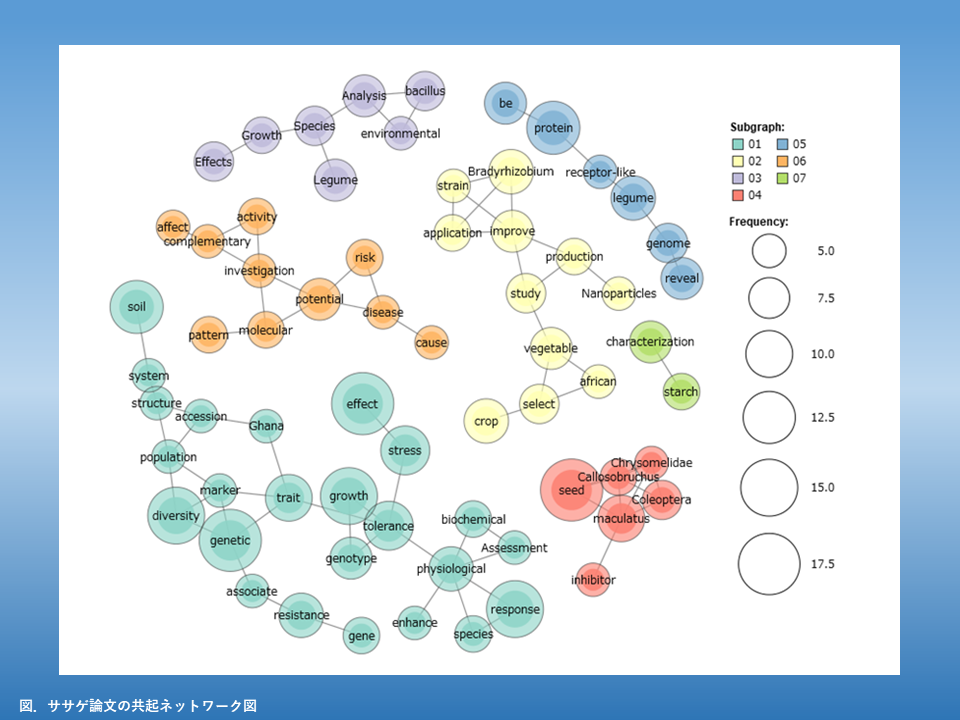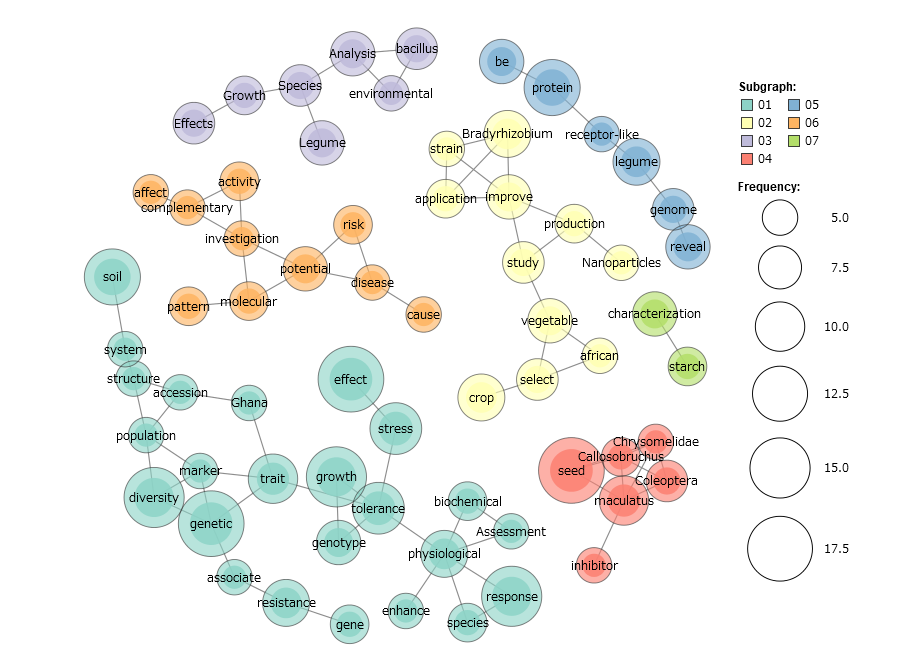Pick Up
715. February 10 is “World Pulses Day” ~Recent Cowpea Research~

February 2 is "World Pulses Day" ~Recent Cowpea Research~
The United Nations established February 10 as “World Pulses Day” at the UN General Assembly meeting in December 2018 to commemorate the International Year of the Pulses in 2016.
In last year's “World Pulses Day”, we featured cowpeas from the FAO's "Crops and climate change impact briefs" published by FAO (Pick Up 476). This year, we would like to explore cowpea research conducted in recent years using the method of text mining.
1. About text mining
Text mining is the process of extracting useful information from a vast amount of written resources. Recently, text mining has been widely used as a method to analyze social networking services, word-of-mouth, survey responses, etc. In analyzing the cowpea research, we used KH Coder, a free software for text mining developed by Prof. HIGUCHI Koichi of Ritsumeikan University.
KH Coder
https://khcoder.net/
2. Recent cowpea research
We searched PubMed (https://pubmed.ncbi.nlm.nih.gov/)a database created by the U.S. National Center for Biotechnology Information (NCBI), for cowpea scientific papers published between 2020 and 2022. The titles of a total of 283 articles hit by the search were analyzed by KH Coder, and a co-occurrence network was obtained as shown in the figure below.A co-occurrence network is a network diagram that connects words with similar patterns of occurrence (strong co-occurrence) among words that occur frequently in a text. Words with more frequent occurrences are indicated by larger circles, and stronger co-occurrence relationships are indicated by thicker lines.

Co-occurrence networks of cowpea papers
Co-occurrence network analysis using KH Coder allowed us to divide words with similar occurrence patterns into several groups. Cowpea is known to be drought tolerant and has high genetic diversity, and these related words have been studied extensively, forming a large group (blue-green) in the above figure. The word seed, indicated by the red circle, is related to Callosobruchus maculatus, a pest species of beetle known commonly as cowpea weevil or cowpea seed beetle, and is also linked to inhibitor and other words, suggesting that much research has been conducted on the control of insect pests in stored seeds.
Using this kind of information, related papers on cowpea can be searched in depth for exploring problems and solutions.
Reference
The EDITS-Cowpea database, which contains information on various traits of cowpea genetic resources, especially those related to bean quality, is available at the JIRCAS website.
Contributor: KANAMORI Norihito (Information and Public Relations Office)
